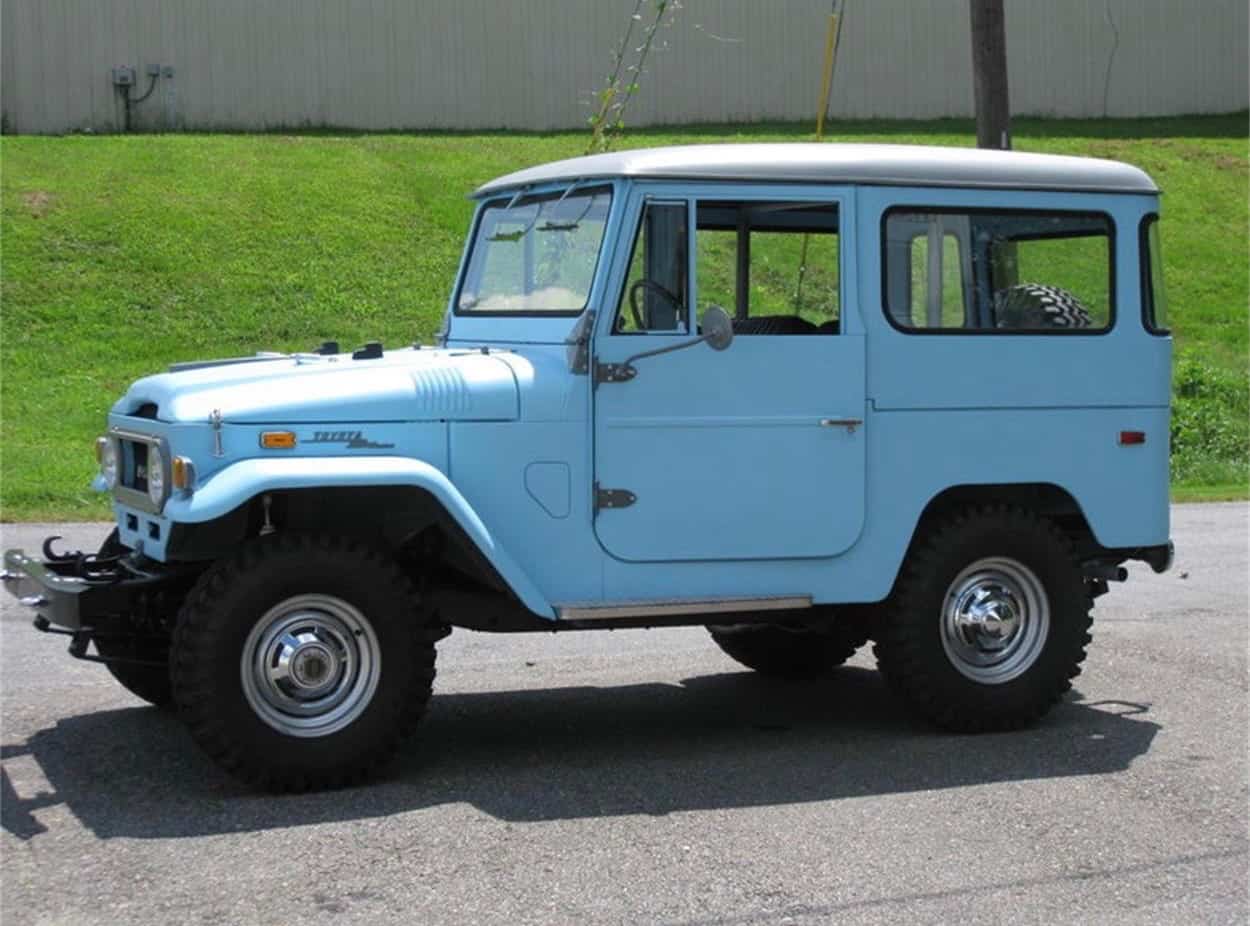It’s been 60 years since Toyota first sent its Land Cruiser to the United States, and the model has become the company’s longest-running nameplate. But can you identify the various generations through which the Land Cruiser has cruised?
“Even Land Cruiser fanatics may not immediately recognize a BJ or early 20 series, so this guide is handy,” said Tom Blackman, parts director at Olathe Toyota Parts Center, which provided the field guide.
With this graphic, you’ll be able to impress your friends and name any Land Cruiser generation with just a quick glance.

“Some people complain that the Land Cruiser has become too civilized and too pricey,” Blackman said. “It was a basic, off-road vehicle for a long time.
“Toyota has updated it to appeal to everyone who wants more tech, reclining back seats, and other extras, but don’t let that fool you. The newer 200 series are maintaining the Land Cruiser’s legacy as one of the best off-road vehicles out there.”
In addition to the chart, Olathe Toyota Parts Center offers some “fun facts” about the Land Cruiser:
- The most telling features of the first iteration of Toyota’s all-terrain vehicle are the fin-like hood ornament, the sharp-angled fenders, and nine grille slats. In 1950, Toyota received a request from the Japanese Police Reserve Force to produce a four-wheel drive vehicle like the Jeep. Called the BJ, it was developed in 1951. Although it had a larger engine than the Willys Jeep, Toyota still lost the bid to Willys. That changed in 1953 when Toyota was awarded a contract and production of the BJ continued through 1955. The letter B in the name meant that the vehicle used a B series engine. There’s speculation that the J has always stood for Jeep, but it’s never been proven. The BJ was also referred to as the Toyota Jeep. Willys Corp. claimed trademark infringement, so in 1954 Toyota officially changed the name to Land Cruiser.
- In 1955, alongside their BJ vehicles, Toyota introduced the 20 Series. This series was offered in short and long wheelbases and a pickup model was available. The variety of models gave Toyota an opportunity to market not only to military and industrial customers but also to civilians. Despite the model variations, the graphic illustrates the consistent hood style, horizontal grille, and softer, rounder fenders that were meant to appeal to civilian drivers. Though the 20-30 series was produced for only five years, it introduced the F platform engine that Toyota used in the Land Cruiser through the 1990s. By 1958, the U.S. military was buying enough of the 20-30 series FJ Land Cruisers that Toyota decided to start selling them to the American civilian market.
- When the 40 series rolled out in 1960, the exterior of the Land Cruiser didn’t change much. Toyota focused on improved acceleration and handling, but this series did receive a few exterior changes during its 24-year lifespan. The graphic points out the repositioning of the wiper mounts and turn signals on the front fenders. The turn signals did go from round to rectangle. The new headlight surround feature was added and started off as oval but eventually the surround became rectangular.
- In 1967, the FJ45V was replaced with the FJ55 to better match the size of the popular station wagons of the day. This was the introduction of the 55 series. It was built with fully enclosed box cross-section members and tested thoroughly until it met American safety standards. In 1975, Toyota improved the F-type engine. The new 2F-type 4.2-liter went in the FJ56V Land Cruiser. The style changes include a fender line that ran the length of the body, the headlights actually protrude into the hood, and the “nose” of the vehicle was more rectangle than square.
- The key identifiers for the 60 Series are a sliding rear quarter window, a full-width hood with integrated fenders, and a drop in the fender line. Although American drivers embraced the 55 Series, Toyota’s designers and engineers wanted to compete with the station wagon even better while keeping other SUV competition at bay. The 60 Series was introduced in 1980. It had A/C, a softer interior and slightly less rugged exterior, but its suspension remained the same and ready to tackle the same adventures of the early Land Cruisers.
- The 80 Series Land Cruiser had passenger car styling with integrated, rectangular headlights, a smaller grille, and more rounded hood; however, the pronounced fender flares enhanced the SUV-look of it. After all, it was now competing with the Land Rover and other popular SUVs in the U.S. Almost all models included front and rear rigid coil and a full-time 4×4 powertrain. When this series was introduced in 1989 it kept the 60 series 3F-E-type engine, but the design was focused on advanced luxury and quality. In 1992, the FZJ80G received a 1FZ-FE-type gasoline, inline 6 engine. Throughout its lifetime, the 80 series continued to receive tech updates, interior improvements, and kept growing in size.
- In 1998, the 100 Series arrived as a prestigious SUV. The wagon model received a new 2UZ-FE-type V8. Options to improve on-road steering and stability were offered on all of these Land Cruisers. Not just using a utilitarian bumper any longer, this is the first series to include integrated fog lights in the bumper and have a lightweight molded bumper cover. Another identifier is the tilt-out rear quarter windows.
- Toyota is advertising the 2019 Land Cruiser as “The peak of capability and comfort.” The 200 Series was introduced 11 years earlier, and the style became more sleek. The fenders almost completely lost their flares, the headlights blend into the fenders, and the bumper cover is hardly discernible from the SUV’s body. The crawl control on this series helps navigate over rocks and sand, assists with downhill treks, and more.
For more information about Olathe Toyota Parts Center, visit its website.





